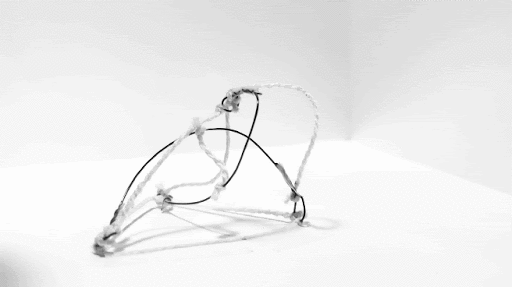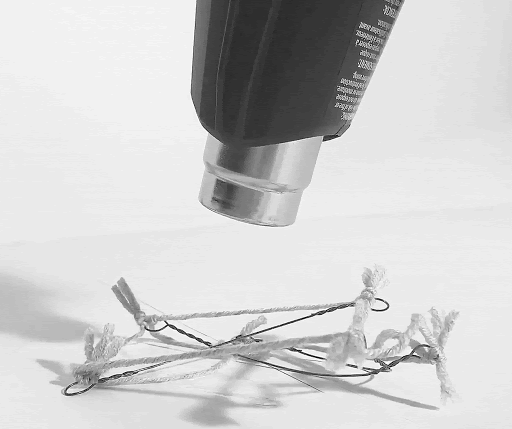


Design Studio 4.022 | MIT Architecture
April 2020
Instructors: Jeremy Jih
TAs: Danny Griffin, Alexandra Waller
Collaborators: Janice Tjan, Nicole Teichner
An exploration of transformation and inversion, inspired by the movements of popcorn, articulated using tensegrity. We explore two new kinds of tensegrity technology: adjustable structures - constructed from music wire and string with adjustable loops built in, and heat-deployed nitinol structures - constructed from nitinol and string.
Adjustable structures: unlike traditional tensegrity models, which require careful measurements and precise construction, these loops allow the tension in the string to be modified by the user. This degree of freedom makes it possible to discover new forms of tensegrity by modifying the lengths of the tensile elements. Furthermore, the thickness of the string in relation to the wire inverts the viewer's expectation of compression and tension.
Heat-deployed nitinol structures: the use of nitinol allows the transformation process to be more automated and less dependent on human action. Nitinol is a metal that exhibits the shape memory property, meaning that it can be set in an initial state at high heat, deformed to a secondary state, then reverted to its first state when heat is applied. By considering variables such as geometry, materials, and aggregation, we are able to control the transformation process undergone by the structure.